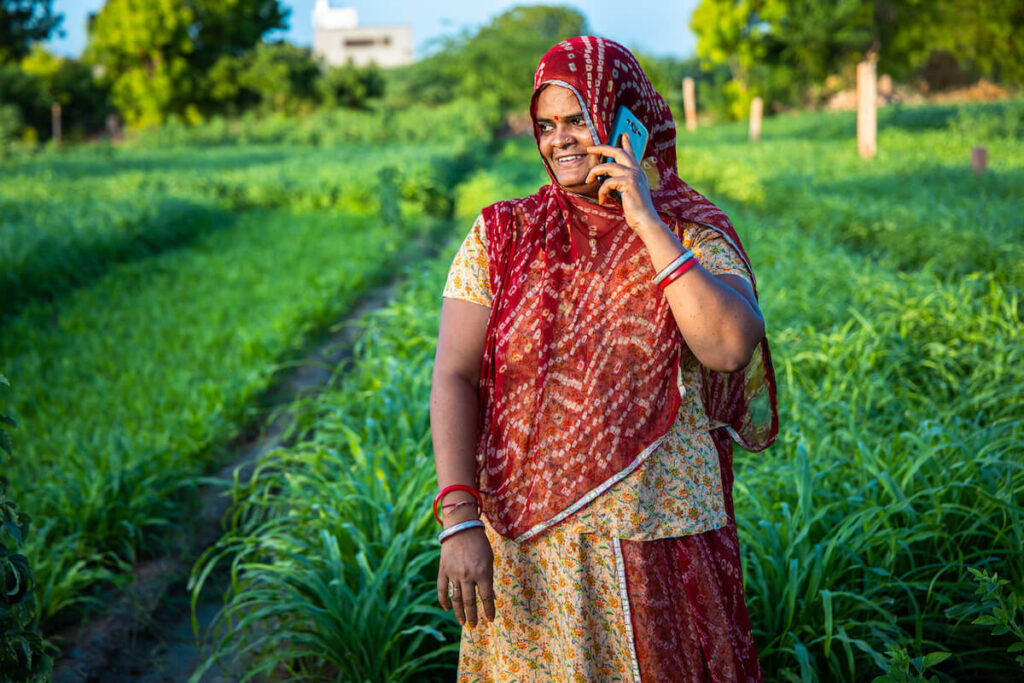
Microcredit brought the first wave of financial inclusion for hundreds of millions of unbanked people beginning in the 1970s, albeit with uncertain impacts. Many are now excited about digital financial services (DFS), which can deepen the level of access to finance and create new opportunities by improving flexibility, security, and privacy of transactions. Now, there is growing evidence that DFS is improving the welfare of marginalized people by making transfers from informal support networks easier in order to help them better cope with shocks.
DFS also offers great promise for women’s economic empowerment (WEE), but can also exacerbate gender disparities and create new risks for women. As DFS are spreading, we need more evidence on DFS and WEE for the following reasons:
- to understand how and why digital finance empowers women by unpacking the “impact” black box
- to reduce the risks of exacerbating gender inequality and any possible negative consequences for women.
The late Sir Fazle Hasan Abed, the founder of BRAC, and Dr. Muhammad Yunus of Grameen Bank both believed in the power of empowered women in transforming societies and targeted them as primary microcredit beneficiaries. But the evidence on microfinance empowering women is limited; for example, in a randomized control trial (RCT) in India, Banerjee and colleagues found that access to microfinance had no significant impact on women’s empowerment. And there are indications of unintended consequences of microfinance on women: loss of control over borrowed money is one example.
Like microcredit, DFS are expected to influence women’s empowerment, particularly WEE, through several pathways. For example, by making information available to service providers, DFS can help eliminate biases against women as potential borrowers, which is often the case, and consequently improve their access to finance. Moreover, by offering quick and affordable transfers, DFS can help women expand their support networks beyond their vicinity, enabling them to better manage shocks independently.
Digital financial services can have unintended consequences for women.
Unfortunately, DFS can also have unintended consequences for women. To start with, persistent digital inequality between men and women — e.g. in device ownership and digital literacy — means that universal access to undifferentiated DFS can potentially increase the gender difference. Some features of DFS, such as the automated transfer of microcredit to individual accounts, as opposed to physical transfer in a group setting, may even have a regressive impact on women as the modest positive impact of microcredit on women’s empowerment appears to be strongly associated with its collective dimension, i.e., group meetings. Indeed, it has been shown that a shift to mobile money from cash transactions in a group setting reduced the importance of group meetings, group cohesion, and peer support.
How can DFS be designed to support, not hinder, women? Can DFS benefit women and men equally?
Evidence on the causal mechanism between WEE and DFS, as well as different features of DFS, e.g., biometric security, is sparse. In a systematic review of almost 600 papers on financial inclusion up to 2017, of which 116 were on digital finance, Gammage et al. found that WEE is far less emphasized as an outcome in digital finance compared to the financial inclusion literature. Furthermore, often the evidence is incomplete and contradictory. Here we have tried to provide a synopsis of the existing evidence and identify areas where more research is needed.
There is some evidence that access to finance through DFS, such as mobile transfer of safety-net benefits, increases women’s bargaining power, reflected in greater dietary diversity and child feeding practice. But it is not clear whether the impact is because of DFS or just access to financial services. And there is contradictory evidence on the gender-differentiated effect of access to ATMs, which can increase household savings, but lower women’s control over their cash by making it easy for their husbands to withdraw money from their accounts.
We do not know what privacy features of DFS can enhance women’s empowerment, nor do we know if the privacy offered by DFS can have negative consequences.
The role of privacy of financial information on women’s empowerment and household resource allocation is relatively well–established. But we do not know what privacy features of DFS can enhance women’s empowerment, nor do we know if the privacy offered by DFS can have negative consequences, e.g., an increase in domestic violence once the private information is revealed.
Similarly, it is easy to imagine DFS saving time for financial transactions — and recent evidence from Tanzania has, in fact, shown that it does — but we do not know if the time saved has an impact on WEE, neither do we know what type of DFS will save women more time and how women will use their saved time, whether it be on productive activity, care work, leisure, or something else.
We have strong evidence on the beneficial effect of mobile money in coping with shocks, mainly through receiving quick transfers from wide social networks. But we know nothing about the differential impact on men and women. Previously, simple interventions, such as a safe box, or a second mobile money account labelled for “emergency expenses” increased women’s savings, control over savings, and better management of shocks. Can simple behavioral features be incorporated in DFS to help women have better control over their financial life? We still do not know.
Finally, the anonymization of client data and data availability on financial transactions can help reduce discrimination against women as potential lenders (for example, cultural bias against women as potential borrowers or lack of information on their creditworthiness). Can DFS reduce discrimination, as hypothesized here? And how can DFS providers become more pro-women?
Why do we need evidence on these causal mechanisms, anyway?
We realize DFS will not automatically reduce gender bias in access to finance or empower women economically, despite its immense possibilities, and may even impose new risks on women, as demonstrated in the case of mobile transfer of microcredit and access to ATMs.
Digitization of financial services will continue, and once they are mature, it would be much more difficult to retrofit the services to eliminate the surfacing of negative consequences for women and use DFS as a positive force for WEE. That is why we need to know exactly how DFS impact WEE. To this end, the BRAC Institute of Governance and Development (BIGD) in Bangladesh has recently started an initiative, WEE-DiFine, to fund rigorous research studies to understand the causal pathways between DFS and WEE across South Asia and Sub-Saharan Africa. Initiatives like these can help us better understand these causal mechanisms and help policymakers maximize positive impacts of DFS on WEE and pre-empt possible adverse effects.









